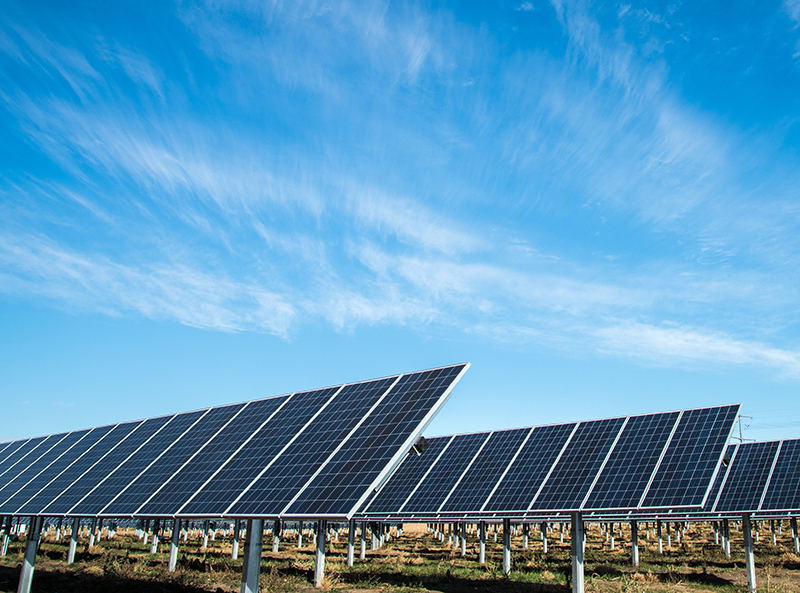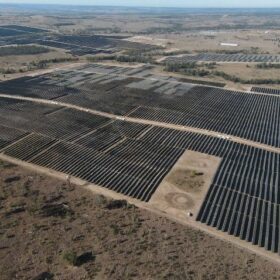New research from the University of New South Wales (UNSW) has disproved claims by some fossil fuel advocates, nuclear power supporters, and even some mercenary economists, who feebly suggest the transition to large-scale renewable electricity would hinder the global economy.
“These critics claim the world’s economy would suffer because they argue renewables require too much lifecycle energy to build, to the point of diverting all that energy away from other uses,” said lead researcher A/Prof Mark Diesendorf.
Diesendorf’s paper, written in collaboration with Prof Tommy Wiedmann of UNSW Engineering, and published in the international journal Ecological Economics, “shows that there is no credible scientific evidence to support such claims, many of which are founded upon a study published in 2014 that used data up to 30 years old.”
“There were still research papers coming out in 2018 using the old data,” derogated Disendorf, “and that prompted me to examine the errors made by those perpetuating the misconception. To rely on such outdated figures was “ridiculous” for wind and solar technology stressed Disendorf, considering the rapid industrial, innovative and commercial advances in those technologies in the last ten years, let alone the last 30.
Same old data, same old tricks
What has been exposed by these UNSW researchers is the “cherry-picking” of scientific research for ulterior means. As the great scientific communicator and astrophysicist, Neil Degrasse Tyson, noted to Fareed Zakaria on CNN: “You can find a scientific paper that says practically anything…but an emergent scientific proof, for it to become an objective truth, it requires more than one scientific paper, it requires a whole system of people’s research, all leaning in the same direction, all pointing to the same consequences.” Tyson was talking about the objective scientific fact of human-induced climate change.
“If you want to find the 1% of papers that conflicted with this,” continued Tyson, “and build policy on that, that is simply irresponsible.”
The use of cherry-picked data from 30 years ago is an attempt to promulgate the misconception that renewables, particularly solar and wind, have poor energy return on energy invested (EROI). But as Disendorf makes clear, the evolution of these technologies is most demonstrable in their cost reductions: “wind by about 30% and solar by 85%-90% in the past decade. These cost reductions reflect increasing EROIs.”
“Not only did these claims rely on outdated data,” continued Disendorf, “but they also failed to consider the energy efficiency advantages of transitioning away from fuel combustion and they also overestimated storage requirements.”
Using Net Energy Analysis (NEA), the UNSW research critically examined the economic case for wind and solar resources to power the transition to 100% renewables in countries with such resources or countries able to import such renewably generated energy. In Australia, the U.S., Middle East, North Africa, China, parts of South America and northern Europe, it was found that “variable renewable energy (VRE) such as wind and/or solar can provide the major portion of annual electricity generation.”
Clean energy promises a clean transition
The research found that not only is the EROI of wind and solar high, but it is increasing. “Typically,” said Disendorf, “solar at a good site could generate the lifecycle primacy energy required to build itself in one to two years of operation, while large-scale wind does it in three to six months.”
Moreover, the recent rapid advances in energy storage, advances promising to continue on an exponential similar to that of solar and wind, means that EROIs for said resources can only multiply.
Put in contrast to the low energy conversion of fossil-fuelled electricity relative to the EROIs of wind and solar and Disendorf concludes: “Finally, we found the macro-economic impact of a rapid transition to renewable electricity would at worst be temporary and would be unlikely to be major.”
Ultimately, of course, the suggestion that the transition to 100% renewable energy would hinder global economic stability is not only a crime against scientific ethics, but a crime against logic and reason too. As the great 20th Century logician Bertrand Russell once noted, “nothing finite is self-subsistent.” Which is to say that it is a logical certainty that a global economy based on finite resources cannot be self-subsistent, and what else but self-subsistence could secure the stability of global economics?
Political self-sabotage
Disendorf said he hoped the study’s results would help to renew confidence in the energy transition, but noted that despite positive efforts by state governments and business, the Australian Government “could help with more policies to smooth the transition to renewable energy.”
“In Australia, the transition is happening because renewable energy is much cheaper than fossil fuels, but there are many roadblocks and potholes in the way,” Disendorf said. “For example, wind and solar farms have inadequate transmission lines to feed power into cities and major industries, and we need more support for storage to better balance the variability of wind and solar.”
Unfortunately, this UNSW research has been published at a difficult time in which UNSW has announced that it will need to cut approximately 500 full-time jobs in an effort to deal with the $370 million funding shortfall as a result of the impacts of the Covid-19 pandemic.
The National Tertiary Education Union is already mobilising and has blamed the Government’s failure to provide the JobKeeper assistance to the university sector for the job losses. “Australian universities provide first-class research and teaching, but they have been deserted by a second-rate Government,” NTEU national president Alison Barnes told the ABC.
It is not yet clear whether UNSW’s world-leading solar and renewable energy research centres will suffer from these cuts. UNSW’s renowned School of Photovoltaic and Renewable Energy Engineering (SPREE) is undoubtably one of Australia’s tertiary success stories. However, solar research and indeed renewable funding generally was at risk well before Covid-19 struck, as Senior Lecturer at UNSW, Richard Corkish, told pv magazine Australia in May, the gap in available grant monies emerging as Australian Renewable Energy Agency (ARENA) nears the end of its current remit could jeopardise some of the country’s most important solar research and development as well as the hubs of expertise themselves.
Even before Covid-19 many were worried the Government was preparing to toss its golden goose by discontinuing ARENA funding. In late January, think-tank the Australia Institute (TAI) made a pre-budget plea to the Morrison Government for a $460 million top-up of the ARENA before funding dries up in mid-2020.
In March, Clean Energy Council (CEC) CEO Kane Thornton spoke to pv magazine Australia about the significance of ARENA to Australia and the energy transition, particularly noting the remarkable hit rate of successes, including SPREE initiatives.
In the end, perhaps one can accept a certain level of ambiguity in scientific research and particularly in the field of economics, although Disendorf and Wiedmann’s research has hopefully put an end to at least one debate.
However, there is no ambiguity in the Americanisation of Australian tertiary education in recent decades, and with the Australian Government once again leaving universities out in the cold during the Covid-19 crisis only evidences its willingness to take the fruit of the tree of knowledge but disregard the careful watering of its roots.
Considering countries like Germany, which lacks Australia’s natural resources, and yet is able to transition its economy to renewables with far more speed and ease while also fully funding a tertiary education system for any and all, the Australian Government has no excuses, and frankly, there is nothing more suspicious than a government that does not wish to educate its people.
This content is protected by copyright and may not be reused. If you want to cooperate with us and would like to reuse some of our content, please contact: editors@pv-magazine.com.








By submitting this form you agree to pv magazine using your data for the purposes of publishing your comment.
Your personal data will only be disclosed or otherwise transmitted to third parties for the purposes of spam filtering or if this is necessary for technical maintenance of the website. Any other transfer to third parties will not take place unless this is justified on the basis of applicable data protection regulations or if pv magazine is legally obliged to do so.
You may revoke this consent at any time with effect for the future, in which case your personal data will be deleted immediately. Otherwise, your data will be deleted if pv magazine has processed your request or the purpose of data storage is fulfilled.
Further information on data privacy can be found in our Data Protection Policy.